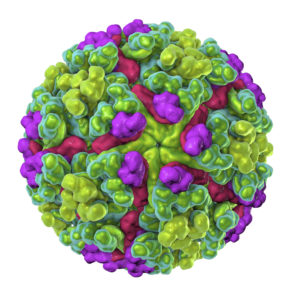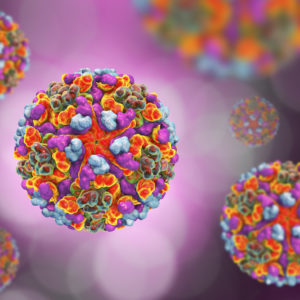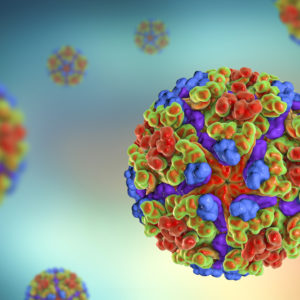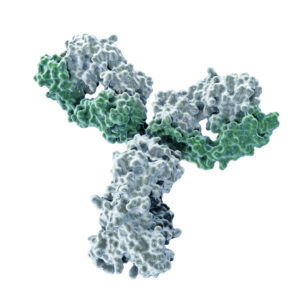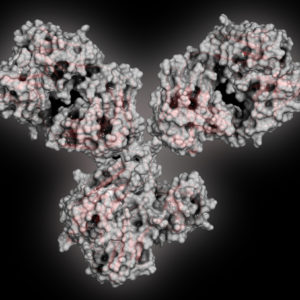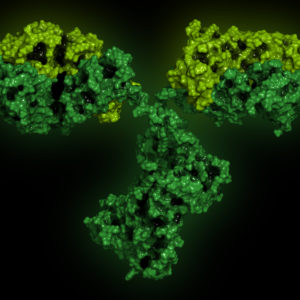Chikungunya Virus
Chikungunya virus is an Alphavirus that has recently been the cause of large-scale outbreaks in the Americas since 2013. Clinical symptoms including high fever, rash, headache, vomiting, myalgia, and severe joint pain, which can last for many years. CHIKV fever is a debilitating illness that has a significant economic impact in areas where CHIKV is endemic.
At The Native Antigen Company, we offer an extensive range of Chikungunya antigens and antibodies to support IVD assay development and vaccine R&D. These include mammalian expressed recombinant virus-like particles, soluble envelope proteins, cell receptor proteins and neutralising monoclonal antibodies. We also offer ELISA assays for the detection of IgG and IgM antibody response to Chikungunya virus.
Chikungunya Virus Background
Chikungunya virus (CHIKV) is a positive sense, single-stranded RNA virus that belongs to the genus Alphavirus, a member of the Togaviridae family of viruses. CHIKV is closely related to other alphaviruses including Ross River virus, O’nyong’nyong virus and Mayaro virus, which are know to cause arthritis. Three genotypes of Chikungunya virus have been identified to date and named Asian, East Central South African and West African, according to their geographical distribution.
In urban areas, humans act as the major host for CHIKV and the virus is primarily transmitted by mosquitoes Aedes aegypti and Aedes albopictus. In Africa, CHIKV is maintained in a sylvatic cycle between animals, mosquitoes and humans. The virus can also be transmitted from mother to child during delivery.
Chikungunya fever, caused by CHIKV, was first identified in Tanzania in 1953. Since 2004 there have been extensive outbreaks throughout Africa and Asia. In 2013 the first cases were identified in the Caribbean, and by September 2014 more than 650,000 cases had been reported in the Americas. Cases of CHIKV infection have also been reported in France, Spain and Italy where the vector is distributed. CHIKV is now recognised as an emerging disease of significant public health concern in these and other regions of the world (CDC).
Chikungunya fever usually starts 2–4 days after infection. Patients present with clinical symptoms that include high fever, rash, headache, vomiting, myalgia, and severe joint pain that may persist for weeks or years (CDC). In some cases, severe cardiac and neurological complications have been reported in infants, the elderly and patients with underlying illness. Transmission of the virus from mother to baby during birth has also been reported, which carries a high risk of morbidity (Morrison, TE).
Diagnosis of CHIKV may be hampered by the fact that clinical symptoms of CHIKV are similar to those seen in cases of Dengue Virus and Zika Virus infection. Therefore, differential diagnosis is an important consideration in areas where flaviviruses such as Dengue and Zika co-circulate. Currently, there is no specific treatment available for the treatment of Chikungunya fever or licensed vaccine for the prevention of CHIKV infection.
References
Centres for Disease Control and Prevention: Chikungunya virus.
Morrison TE. (2014). Reemergence of Chikungunya virus. J. Virol.88:11644-7
Chikungunya Virus Antigens
We offer a range of recombinant antigens for Chikungunya virus studies, prepared using our proprietary mammalian cell expression system. Antigens include our unique virus-like particles (containing E1, E2 and Capsid proteins), and soluble E1 and E2 envelope proteins.
The most recent addition to our Chikungunya range is a recombinant MXRA8 protein, which has been identified as a cell surface receptor mediating CHIKV entry into host cells.
Chikungunya Virus Antibodies
Our range of antibodies specific to Chikungunya virus includes monoclonal antibodies binding capsid protein and E2 envelope protein. We also offer polyclonal antibodies raised against our Chikungunya virus-like particles, which bind capsid, E1 and E2 proteins.
Questions?
Check out our FAQ section for answers to the most frequently asked questions about our website and company.

